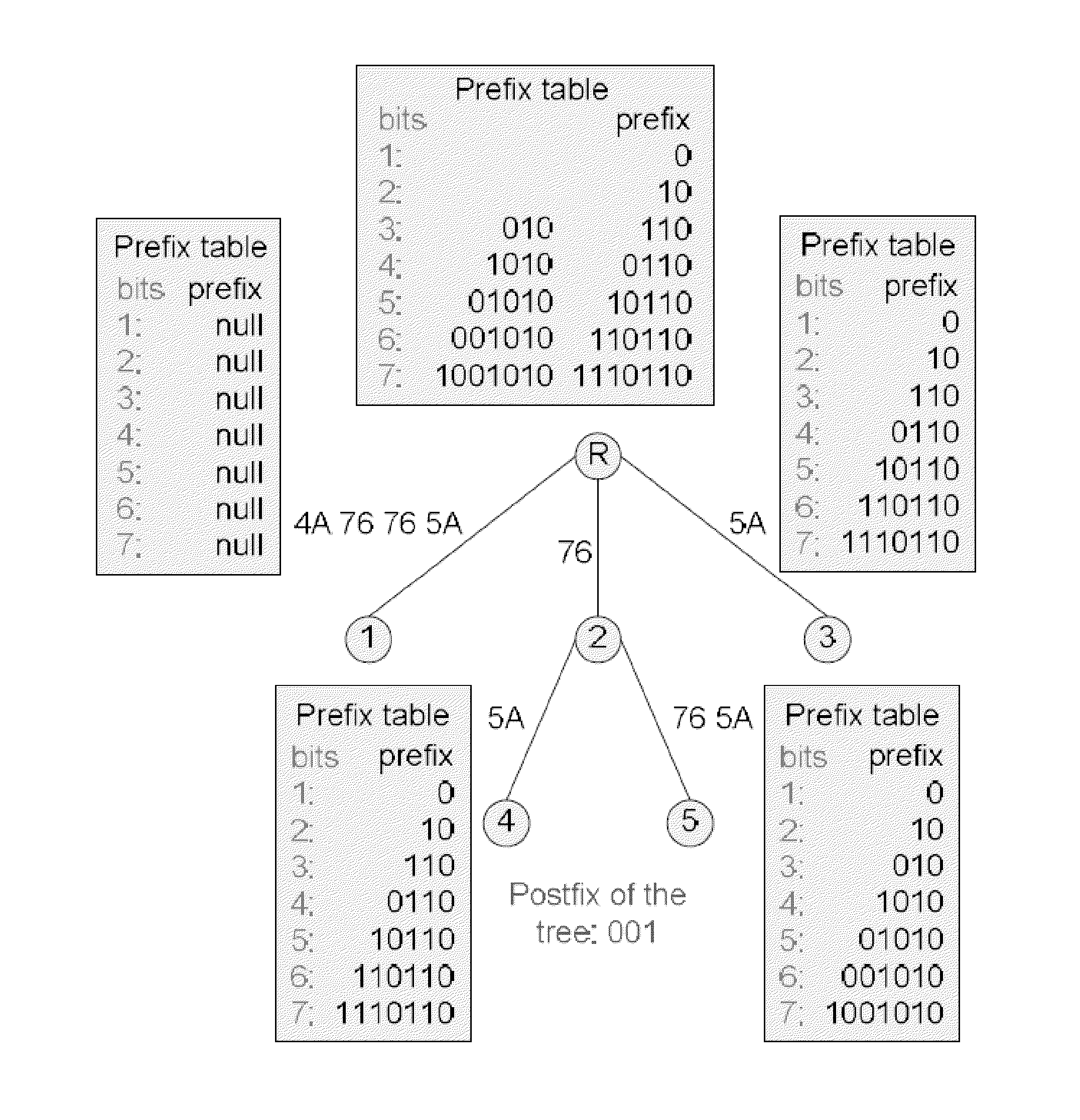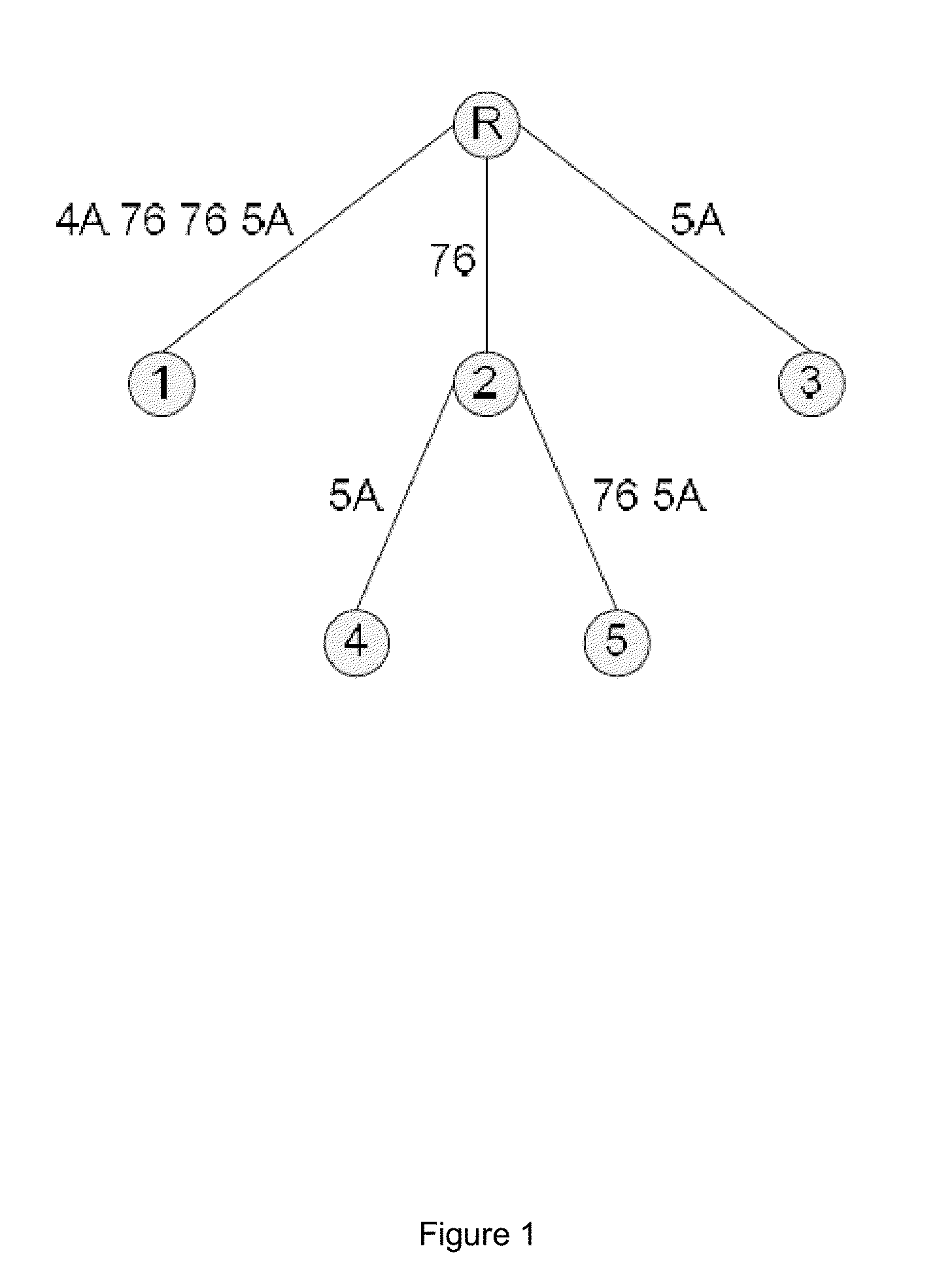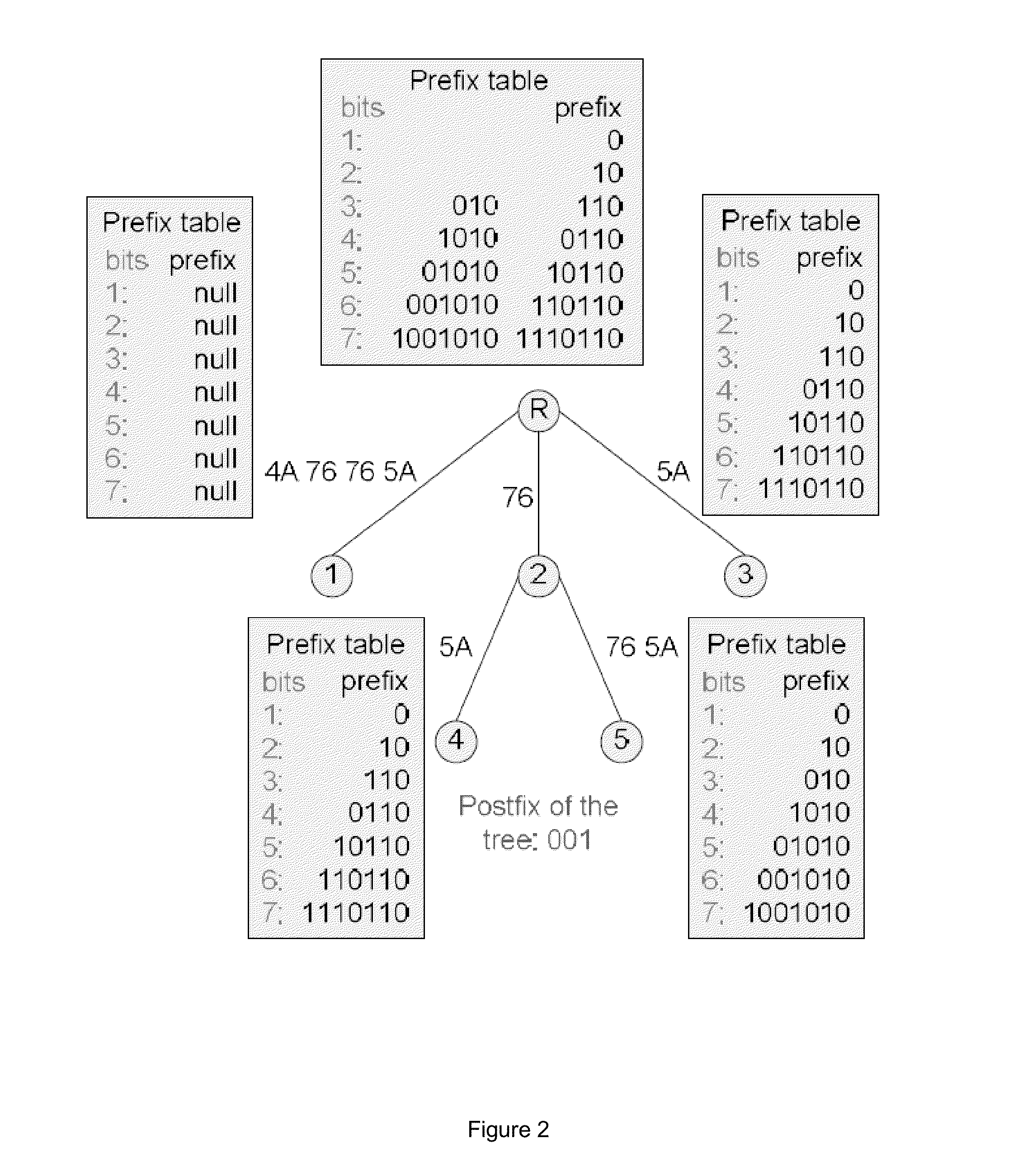Method and system for searching and storing data
a data and data technology, applied in the field of methods and systems for searching and storing data, can solve the problems of space complexity, more space and time consuming, and significant decrement in the performance of suffix tree search
- Summary
- Abstract
- Description
- Claims
- Application Information
AI Technical Summary
Benefits of technology
Problems solved by technology
Method used
Image
Examples
first embodiment
[0038]the present invention provides a method of creating a novel variant suffix tree of a string. This suffix tree will be referred to herein as a “CS-Tree”.
[0039]The basic structure of a CS-Tree is exactly the same as the suffix tree structure that supports standard text pattern matching. However, in embodiments of the present invention, given a binary string, each binary value is not considered as a single value. Instead, every 8 bits of the binary string are grouped to a byte (i.e., the text character) and the last bits that cannot form a byte are ignored to obtain a normal text strings. Suffix tree is then built for that text string.
[0040]For example, given a binary string 01001010 01110110 01110110 01011010 001, without considering the last three bits 001, we could convert this string to a text string as 4A 76 76 5A and build the suffix tree for the converted string as shown in FIG. 1. Since this basic tree structure cannot support binary pattern matching directly, it must be ...
second embodiment
[0051]the present invention provides a method of binary pattern matching using the CS-Tree.
[0052]In the method of this embodiment, given a search pattern, 8 different search cases are generated, each of which contains a triplet: a prefix, a main, and a postfix. The prefix part of each case is extracted from the head of the search pattern and contains a binary string length from 0 to 7. The remaining part of the search pattern after excluding the prefix part is grouped into bytes similar to the way that the CS-Tree structure described in relation to the first method above. These bytes are converted to a text string and form the main part of each case. Finally, the rest of the search pattern after excluding the prefix and main parts is the postfix. Table 1 shows an example of a binary search pattern for 10100111 01100111 01.
TABLE 1binary search cases of 10100111 01100111 01CasePrefixMainPostfix010100111 (A7) 01100111 (67)011101001110 (4E) 11001110 (CE)121010011101 (9D) 10011101 (9D)31...
case 1
[0056] the match ends at an internal node. In this situation a further check is performed to see if the postfix matches a prefix of any edge going out of the node to its children. For example, the search pattern 10100111 01100111 01 in Table 1 could be found in the CS-Tree in FIG. 2 because when we consider the search case 4, the main part matches the edge 76, which ends at the internal node 2, while the BPT of the edge 76 contains the prefix part 1010 and the postfix 011101 matches an initial portion of the edge 76 5A. This comparison with the next edge can be made by bit-by-bit searching, or by shifting the first byte of that edge 2 bits to the right before making a comparison.
PUM
 Login to View More
Login to View More Abstract
Description
Claims
Application Information
 Login to View More
Login to View More - R&D
- Intellectual Property
- Life Sciences
- Materials
- Tech Scout
- Unparalleled Data Quality
- Higher Quality Content
- 60% Fewer Hallucinations
Browse by: Latest US Patents, China's latest patents, Technical Efficacy Thesaurus, Application Domain, Technology Topic, Popular Technical Reports.
© 2025 PatSnap. All rights reserved.Legal|Privacy policy|Modern Slavery Act Transparency Statement|Sitemap|About US| Contact US: help@patsnap.com



